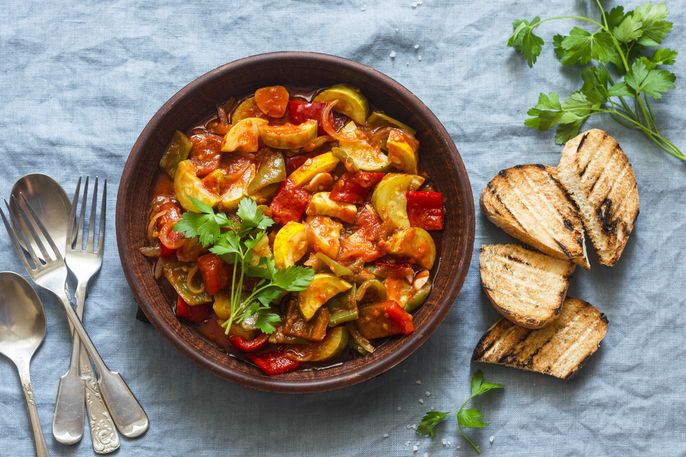A bland diet can be recommended following procedures like bariatric, stomach or esophageal, or it can be maintained by people with health conditions like ulcers or gastritis. It can also be advised for those with dental prostheses or used as a transition to a normal diet.
A bland diet is made up of low-fiber foods that are soft and well-cooked, so that chewing and digestion is easier. These foods should contain little to no spices to reduce irritation along the digestive tract.
Ideally, a bland diet should be advised and monitored by a registered dietitian to ensure your nutritional needs are met and that any previous health conditions are taken into account.

When it's indicated
A bland diet is often indicated as a transition from a liquid or soft diet to a normal diet. It can also be recommended in situations where gastric function is compromised, like after bariatric, stomach or esophageal surgery, for example.
Furthermore, the bland diet may be recommended for people with gastritis, a stomach ulcer, a hiatal hernia, liver failure, a gallbladder problem or pancreas problems. It can also be beneficial for people who use dental prostheses.
What to eat
When maintaining a bland diet, foods should be low in fiber, in addition to being soft, well-cooked and/or processed, to make chewing and digestion easier.
Therefore, the foods that should be prioritized in the bland diet are:
- Cooked vegetables, such as carrots, chayote, zucchini, pumpkin, green beans, spinach and eggplant
- Soft, peeled and/or cooked fruits, such as pears, papayas, bananas, avocados, melons, watermelons, kiwis and cooked apples
- Boiled or pureed tubers, such as potatoes, yams, yams and sweet potatoes
- Low-fat proteins, such as diced chicken, eggs, tofu and cooked fish
- Low-fat dairy products, such as skim milk, low-fat yogurt, and white cheeses
- Mashed beans
- Low-fiber grains such as white rice, white pasta, porridge and polenta
- Soft breads, such as sliced bread, milk bread, potato bread or brioche
Water, tea, coconut water and strained fruit juices can also be consumed during the bland diet.
What to avoid
Foods that should be avoided on the bland diet are:
- Fried foods, such as chips, French fries, fried eggs, nuggets and pastries;
- Raw vegetables, such as lettuce, raw carrots and raw arugula;
- Dense or fiber-rich breads, such as whole grain bread, French bread, ciabatta or multigrain bread;
- Crunchy fruits and/or fruits with seeds, such as grapes, coconuts, raw apples, pomegranates and passion fruit;
- High-fat dairy products, such as full-fat yogurt, yellow cheeses and whole milk;
- High-fat proteins, such as chicken and fish with skin and beef with fat;
- Seeds, such as peanuts, almonds, cashews and walnuts;
- Spicy condiments and spices, such as pepper, curry, wasabi and mustard;
- Alcohol, such as beer, wine, cachaça or vodka.
Additionally, it is also important to avoid crackers and foods that increase gas production such as cabbage, cauliflower, broccoli and Brussels sprouts. Learn more about the foods that cause cause gas.
Can you eat tomatoes on a bland diet?
During the bland diet, you can eat tomatoes. However, they should be cooked and can be added to preparations such as soups, stews and sauces.
Meal plan
The following table outlines a 3-day meal plan for a bland diet:
The quantities and types of food consumed on a bland diet may vary depending on each person's weight and general health. Therefore, you should consult a registered dietitian for a most customized meal plan as needed.






























